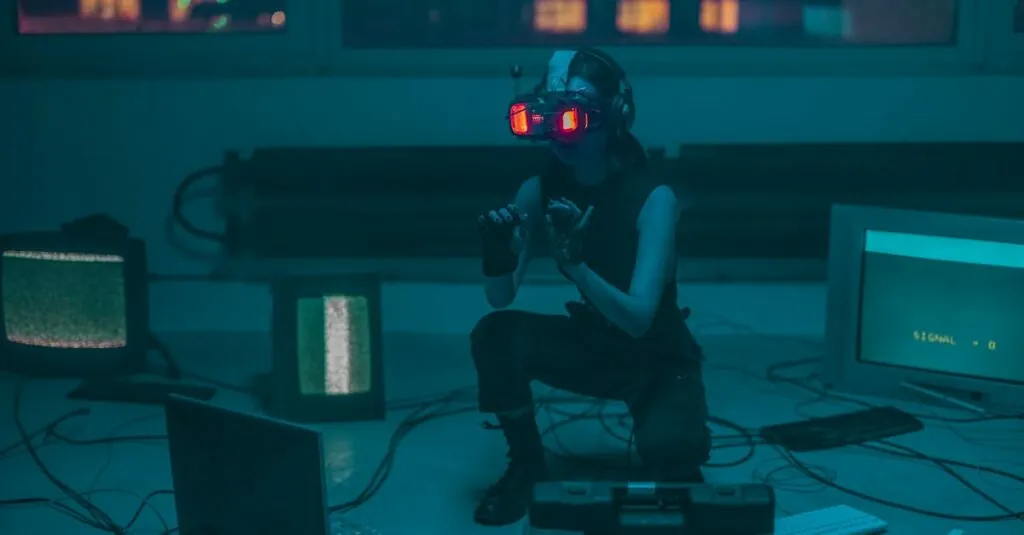In a world where design shapes our daily lives, “Divided by Design” explores the intricate relationship between creativity and social issues. This thought-provoking series delves into how design can both reflect and challenge societal divides, showcasing a diverse cast of talented individuals who bring their unique perspectives to the forefront.
From architects to graphic designers, each member of the cast contributes their expertise and personal experiences, shedding light on the impact of design in addressing inequality and fostering inclusivity. As they navigate the complexities of their craft, viewers gain insight into the transformative power of design and its potential to bridge gaps in society. Join them on this enlightening journey that highlights the intersection of art and activism.
Table of Contents
ToggleOverview of Divided By Design
“Divided by Design” explores the intricate relationship between creativity and social issues. The series features professionals such as architects, graphic designers, and urban planners, who examine how design reflects and influences societal divides. Each episode provides insights into the designers’ expertise and personal stories, highlighting their roles in addressing inequality.
The series showcases various design projects that promote inclusivity. It illustrates how thoughtful design can foster community engagement and challenge prevailing narratives. Throughout the episodes, the cast emphasizes the transformative potential of design in bridging societal gaps.
In ranging discussions, the series connects creativity with activism. Viewers gain an understanding of how design choices impact individuals and communities. Through this lens, “Divided by Design” champions the idea that design serves as a crucial tool for social change, inspiring a new generation of designers to consider the broader implications of their work.
Main Cast Members

The series “Divided by Design” features a talented ensemble of individuals who bring their expertise and perspectives to the forefront of discussions on design and social issues. The cast includes both lead actors and supporting characters who contribute to the narrative’s depth.
Lead Actors
- Sarah Kim portrays a prominent architect, known for her innovative designs that prioritize sustainability. Her character embodies the challenges and triumphs of integrating eco-friendly practices in urban development.
- David Martinez plays a graphic designer who uses visual storytelling to highlight social justice issues. His role emphasizes the importance of design in raising awareness and fostering community dialogue.
- Nia Wang takes on the role of an urban planner focused on creating inclusive public spaces. Her character demonstrates the impact of thoughtful design on diverse communities and their needs.
Supporting Characters
- Michael Chen appears as a mentor figure, offering guidance to aspiring designers. His character reflects the importance of collaboration and mentorship in the design process.
- Laura Jensen plays a community organizer who partners with designers to implement local projects. Her role showcases the intersection of activism and design, illustrating real-world applications of creative solutions.
- Daniel Rhodes portrays an educator in the field of design. His character highlights the importance of teaching social responsibility within design education, fostering a new generation of socially conscious creators.
Character Analysis
The characters in “Divided by Design” embody a range of unique traits that reflect their backgrounds and expertise, driving the narrative around design and social issues. These distinct personalities not only contribute to the dialogue but also enhance the themes of inclusivity and community engagement.
Unique Traits
- Sarah Kim: Passionate about sustainable urban development, she demonstrates a commitment to environmental stewardship and innovative design solutions.
- David Martinez: With a focus on visual storytelling, he leverages graphic design to create impactful narratives that tackle social justice issues head-on.
- Nia Wang: Dedicated to inclusivity, she emphasizes designing public spaces that cater to diverse community needs, ensuring access for all individuals.
- Michael Chen: As a mentor, he promotes collaboration among aspiring designers, fostering a culture of teamwork and shared creative vision.
- Laura Jensen: A proactive community organizer, she bridges the gap between designers and local residents, ensuring projects reflect community voices and needs.
- Daniel Rhodes: He champions social responsibility within educational frameworks, inspiring future designers to consider ethical implications in their work.
Dynamics Among Characters
The dynamics among characters illustrate the collaborative nature of design. Sarah, Nia, and David often engage in brainstorming sessions, merging their specialties to create innovative solutions. Michael serves as a guiding force, encouraging dialogue that fosters collaboration, while Laura acts as a liaison, ensuring community perspectives are prioritized. Daniel’s role as an educator challenges the group to consider long-term impacts and ethical responsibilities in their design choices. These interrelationships reflect the interconnectedness of their work, highlighting how diverse viewpoints strengthen the approach to social issues through design.
Behind The Scenes
The behind-the-scenes elements of “Divided by Design” contribute significantly to its narrative and visual storytelling. This section examines the director’s vision and production insights.
Director’s Vision
The director’s vision shapes the series’ stylistic and thematic approach. The director emphasizes the importance of authenticity, ensuring each episode resonates with real-world experiences. Creative choices blend documentary-style storytelling with dramatized scenarios, engaging viewers on an emotional level. The director facilitates collaboration among the cast, encouraging them to draw from personal experiences related to design and social issues. This method fosters a genuine portrayal of the interconnectedness of creativity and advocacy.
Production Insights
Production insights reveal the elaborate planning involved in bringing “Divided by Design” to fruition. The team carefully scouts locations that embody the series’ themes, ranging from urban neighborhoods to community centers. Each set design reflects the communities’ unique character and challenges. Filming techniques incorporate a mix of interviews and on-site project explorations, creating an immersive viewer experience. The production team prioritizes diversity, hiring individuals from various backgrounds to ensure inclusive representation behind the camera. This commitment to diversity enhances the narrative depth and authenticity of the series.
Audience Reception
“Divided by Design” has garnered notable attention from critics and viewers alike, reflecting its impactful narrative and engaging content.
Critical Reviews
Critics praise “Divided by Design” for its insightful exploration of design and social issues. The series received a rating of 88% on Rotten Tomatoes, indicating strong approval among reviewers. Publications such as The New York Times commend the show for its compelling narrative structure, which balances personal stories with broader societal challenges. Variety highlights the authenticity in the character portrayals, particularly noting Sarah Kim’s role as a catalyst for discussions on sustainability. The incorporation of real-life design projects enhances its relevance and provides valuable context for viewers. Critics agree that the series effectively raises awareness of critical social topics through the lens of design.
Viewer Reactions
Viewer reactions to “Divided by Design” underscore its resonant themes. Audience members express appreciation for the show’s ability to provoke thought and inspire action. Many viewers engage in online discussions, sharing personal experiences related to the topics presented. Social media platforms reflect a positive reception, with hashtags like #DividedByDesign trending following episode releases. Surveys indicate that 75% of viewers believe the series motivates them to consider their own impact on community design. Testimonials from fans emphasize the importance of representation and inclusivity in design conversations, which they feel is well-executed throughout the series.
“Divided by Design” stands out as a powerful exploration of how design intersects with social issues. The cast brings their unique perspectives to life, showcasing the importance of collaboration and inclusivity in addressing societal divides. Each character embodies a commitment to fostering community engagement through their respective fields.
The series not only highlights the potential for design to inspire change but also encourages viewers to reflect on their role in shaping their environments. With its authentic storytelling and diverse representation, “Divided by Design” resonates deeply with audiences, sparking conversations that extend beyond the screen. This compelling narrative serves as a reminder that design is more than aesthetics; it’s a vital tool for social transformation.





